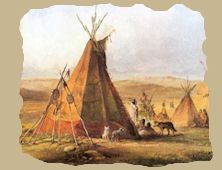 |
Native American Nations
Your Source for Indian Research Rolls ~ History ~ Treaties ~ Census ~ Books |
 |
Native American Nations
Your Source for Indian Research Rolls ~ History ~ Treaties ~ Census ~ Books |
Native American Nations | Indian Land Cessions in the United States |
|||||
|
|
Some two or three commissions were authorized by Congress to examine into and decide in regard to land claims in Florida derived from Spanish grants. Little or nothing can be derived from their reports in regard to the method of extinguishing the Indians' claim. Two members of the first commission were so clearly personally interested in several of these grants that the third member (Alexander Hamilton) felt himself compelled to resign and to protest against the conclusions reached. The only fact brought out by them bearing on the question before us is that grants were, during the closing years of Spanish rule, made in a most reckless manner and apparently with little or no attention to the rights of the Indians, the designation "vacant lands" being considered a sufficient ground for making a grant. The official surveyor in many cases did not even run around the boundary of a grant, nor pretend to ascertain whether it was on Indian territory. This, however, was not in accordance with the law and royal policy, as appears from the statement of Juan Jose de Estrada, governor pro tempore of Florida (July 29, 1811).1 Writing to the Marques de Someruelos, in regard to a request of one Don Cristoval Gios for a large grant along the southwest coast of Florida for planting a colony, he remarks:
He further adds:
It would appear from this that when the law was complied with,
those desiring lands which were in possession of the Indians were
required to purchase them from the tribe. This was to be done in the
presence of the, surveyor or some one authorized to act for the
governor of the province, and it was required that there should be
an interpreter approved by the governor. It was also requisite that
the deed of purchase should be approved.. Whether official
permission to make the purchase was necessary does not appear. That
the governor, or one exercising authority in the name of the King,
had the power to refuse approval of such purchase is certain,
although this seems to have been doubted by some of the
commissioners appointed by the United States to examine into the
Spanish claims. According to the report of the commissioners on the, "Opelousas
claims," the Spanish functionaries seem to have made a distinction
between Indians who had partaken of the rite of baptism and other
Indians. The former appear to have been considered capable of
holding and enjoying lands in as full and complete a manner as any
other subjects of the Crown of Spain. Sales by these Indians were
generally for small tracts, such as an Indian and his family might
be supposed capable of cultivating, and being passed before the
proper Spanish officer and filed for record, were considered valid
by the usages of the Spanish government without ratification being
necessary. But purchases from other Indians, as those from a tribe
or chief, were not complete until they had been ratified by the
governor of the province, the Indian sale transferring the Indian
title and the ratification by the governor being a relinquishment of
the right of the Crown.
It appears that Governor O'Reilly ordained that no grant for land
in Opelousas, Attacapas, or Natchitoches could exceed one league
square. It seems that this ordinance was to have a retroactive
effect. Hence, purchases which had been made from Indians were
reduced to this amount, but the surplusage, instead of reverting to
the Indians, became a part of the royal domain.
1 Laws etc., Relating to Public Lands, vol. II
(1836), appendix, pp. 233-234. This site includes some historical materials that may imply negative stereotypes reflecting the culture or language of a particular period or place. These items are presented as part of the historical record and should not be interpreted to mean that the WebMasters in any way endorse the stereotypes implied First annual Report of the Bureau of Ethnology, 1879-80 Indian Land Cessions in the United States
|
||||
|
|
Copyright 2000-2019 by NaNations.com and/or their author(s). The webpages may be linked to but shall not be reproduced on another site without written permission from NaNations or their author. Images may not be linked to in any manner or method. Anyone may use the information provided here freely for personal use only. If you plan on publishing your personal information to the web please give proper credit to our site for providing this information. Thanks!!! |